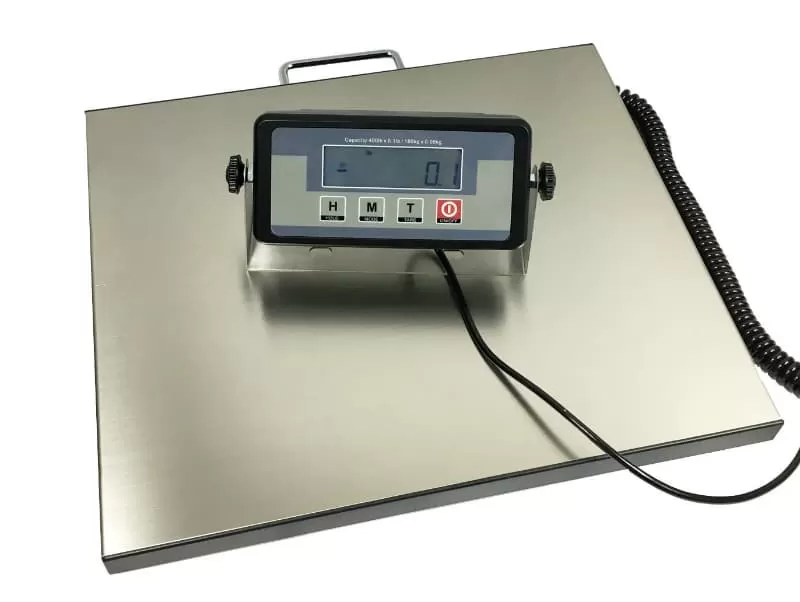Meaning or Definition of Digital Scale
Scales are the oldest weighing device and measure weight using the lever principle. An unknown weight is placed on one end of the lever and balanced with a known weight at the other end. Most digital scales use a special type of spring called a strain gauge load cell that measures the strain or stress exerted by the electrical current.
Characteristics of a Digital Scale
- It can be automated. Many scales have signal conditioners with extensions that can be used to connect it to another electronic device.
- For industries, it is possible to use these functions to automate different aspects, such as material management, invoicing and process controls.
- Versatile: with a digital scale, you can weigh almost anything. From small and tiny loads to heavy industrial objects, you can find a digital scale that will provide accurate measurements.
- In addition, you can adjust the display to get results in the units of measurement you want. This could be in grams, ounces, pounds, grains, carats, and in some cases percentages.
- Portable (also requires little storage space): Many of these scales are small enough to fit in your pockets.
- This means that not only do you carry your weight scale, but you can place it anywhere in your room and never worry about space.
- In fact, some scales use batteries. This makes it very useful if you want to use your device on the move. They are a perfect solution in situations where it is not practical to use mechanical scales.
- For example, when you weigh pets, since you can hardly make the animals stay still for long.
- Digital scales come with many features to meet the needs of almost all users.
- Some can be connected via WiFi, have a voice function to assist people with visual disabilities, large screen, print and memory. This is an advantage, at least, for many people
How to Use a Digital Scale or Electronic Scale ?
- Calibrate your Scale
- This ensures that the reading you receive is accurate. The analog scales come equipped with a dial or knob located at its base.
- Find an object of known weight, such as an unopened five-pound bag of sugar, and place it on your scale.
- If the scale only reads three pounds, use the knob to adjust the scale reading to the correct weight. Repeat this process every three to six months.
Place the Scale on a Hard Surface
- When preparing to weigh yourself, place your scale on a hard surface, such as a tile floor.
- Using your bathroom scale on a carpeted surface may cause an incorrect reading due to interference from carpet fibers:
- They act like a spring, making the footpads on your scale less sensitive to your weight.
Use on a level surface
Placing your scale on a level surface also helps ensure an accurate reading. Using the scale on an uneven surface can result in an alteration of its calibration and therefore an inaccurate reading.
Keep for Personal Use
Over time, the springs in your scale will wear out with use; the more you or anyone else uses it, the faster this will occur, leading to inaccurate readings. To combat this, be sure to use the same scale each time you check your weight. Let your family know that this is your scale and it is for your use only.
Use it in the morning
Eating and drinking throughout the day causes a variation in your weight, making it seem like you have gained. Therefore, it is always better to use the scale first thing in the morning, before having consumed something.
Wait for the Digital Scales
If you have a digital scale, there will be a button located on the base. Press this button once and wait until the display shows zero. Some may flash the number zero two or three times; wait for a constant zero to be displayed before scaling.
Operating a Digital Personal Scale
Today, people use electronic scales to make their lives easier. 80% of households in the world have a digital weight scale. They are used in the kitchen to make sure the ingredients of a certain recipe are very accurate, in the bathrooms for those who want to monitor their weight, as well as in measuring food portions for those who seriously want to end obesity.
These handy digital scales are also useful for those working in the jewelry and gemstone trade. The digital scales are not only used to control the weight of people, it is also very important to mention that in the big industries the digital platform scales have a very relevant use. The price of digital scales varies a lot according to their brands, models and sizes.
Their growing popularity could be attributed to several reasons, among which are their portability, accuracy and multiple functionalities. Even used electronic digital scales in very good condition are resold in the market with great acceptance by users.
General Parts of a Digital Scale
To explain how a digital scale works, it would be necessary to first discuss its main components. These include the structure, a load cell and a signal conditioner.
- Structure: This is the physical perspective of the weight scale and is primarily the surface that supports the load. As you might imagine, the physical structure houses the electronic circuitry behind the function of the scale and the load cell. The structure of a digital scale comes in different designs depending on the brand. In addition, it may be necessary to place the structure over the load cells, especially when high loads are involved. An example is the electronic scale used in the weighbridge and industries.
- Weight Indicator for Commercial Scales, Industrial Scales and Home Scales: Many digital scales come with an LCD display where the measurements of the weight obtained are shown.
- Digital Scales’ Load Cell: This is a transducer whose important function in the scale is to convert the force exerted by the measurement object into an electrical signal. Some electronic scales have more than one load cell. Small or low capacity weight scales have only one load cell. Digital floor scales or inactive comprise four cells. Those with a high rating capacity, such as truck scales, may have between 4 and 8 load cells. In particular, the load cells determine the recommended capacity of the scale. Even if the mechanical structure is strong enough to support higher loads, consideration of the rated capacity is required to obtain accurate results.
- Signal conditioner: this is the electronic component of the digital electronic scale. Several functions of this component include powering the load cell, receiving electrical signal from the load cell and converting it into intelligible numbers, which is electronically known as the digital output. Today’s digital weights are programmed to display the digital output in different units of measurement to suit the needs of the users.
In summary we can say that the parts of a digital scale are listed below:
- These include the structure, a load cell and a signal conditioner.
- Structure: this is the physical perspective of the weighing machine and is mainly the surface that supports the load.
- As you can imagine, the physical structure houses the electronic circuitry behind the function of the scale and the load cell.
- The structure of a digital scale comes in different designs depending on the brand.
- In addition, it may be necessary for the structure to sit in the load cells, especially when high loads are involved. An example is the digital scales used in heavy scales and industries.
- Weight indicator: many digital scales come with an LCD display where the measurements of the weight obtained are shown.
- The load cell: it is a transducer whose important function in the scale is to convert the force exerted by the measurement object into an electric signal.
- Some digital scales have more than one load cell. Scales of small or low capacity have only one load cell.
- Digital floor scales or inactive scales have four cells. Those with a high capacity rating, such as truck scales, may have between 4 and 8 load cells.
- It should be noted that the load cells determine the recommended capacity of the scale.
- Even if the mechanical structure is strong enough to support higher loads, one is required to consider the nominal capacity to obtain accurate results.
- Signal Conditioner: This is the electronic component of the digital scale.
- Several functions of this component include powering the load cell, receiving the electrical signal from the load cell and converting it into intelligible numbers.
- These are electronically referred to as digital output.
- Today’s scales are programmed to display the digital output in different units of measurement to meet the needs of users.
Types of Digital Weight Scales
Domestic Scales
Scales are used in the home for various purposes and are mainly found in bathrooms and kitchens. Counting scales can also be used in the home and are used to determine the count of a specific item when the weight of a single unit is known.
Commercial Scales
- Examples of trade scales include jewelry scales, counting scales, restaurant scales, bench scales, platform scales, and floor scales.
Jewelry scales are used to weigh precious metals, gems and semi-precious stones. - Counting scales are used to measure the quantity of items when the weight of a single unit is known, and these scales are often used to count money quickly and accurately.
- Platform scales, floor scales, and bench scales are used for a variety of purposes, depending on the company and industry.
Industrial Scales
- Industrial scales serve a variety of purposes in countless industries, such as agriculture, laboratory, truck scales, platform scales, bench scales, and platforms.
- Truck scales are large scales designed for weighing semi trucks and their contents.
- Bench scales, platform scales and laboratory scales are used in a variety of industries to measure weights from several grams to several tons.
- Bench scales are used for portion control, package weighing, piece counting and a variety of other purposes, and can weigh from 150 grams to 600 pounds.
Precision Scales
- The precision scales are used in scientific and laboratory environments and are designed to weigh in increments of only 0.001 grams.
- These scales come in a variety of forms, including platform scales, hanging scales, bench scales, and portable or pocket scales.
- These precision scales are used in measuring chemicals and other items for scientific and pharmaceutical purposes, food and liquids, package weighing, and other counting and measuring purposes.
Digital Scale for People
Human scales designed for home/clinical use are generally low precision scales. Compact floor models are the most commonly used for weighing humans in addition to babies. There are other special types for scales for wheelchairs or stretchers mounted on a scale. For weighing babies and small children, baby scales are used by hospitals.
Digital Kitchen Scale
- Designed to accurately and precisely weigh food ingredients so you can avoid guesswork, kitchen scales are an indispensable kitchen tool.
- Use them to measure the desired amount of food according to dietary requirements, or simply to more accurately measure various ingredients for baking and cooking.
- Widely used in Europe, many recipes have ingredients measured by weight. Cooks in all countries find kitchen scales a useful addition to their kitchen.
Digital Bathroom Scale
The bathroom scales are flat platform scales designed to weigh people.
How to Calibrate a Digital Weight Scale ?
Step 1 – Make preparations
Before attempting any calibration routine, it is always important to turn on the digital balance and let it warm up. In addition, it is also important to use only objects with a defined weight for your calibration routine. It is useless to have an approximation when it comes to getting accuracy.
Step 2 – Start the calibration mode
Locate the digital balance calibration button. It usually bears one of the following imprints: “Cal”, “Function”, “Mode” or “Cal / Mode”. Now press this button down until the digits displayed on the scale go to “0,” “000,” or “Cal. At this point, the scale should be in calibration mode.
Step 3 – Perform the calibration test
Once the digital scale is in calibration mode, it will place the known weight objects gathered in step one on the scale. Ideally, you should place a number of objects that equal approximately 30 pounds so that the scale has a balanced weight for calibration. Place the 30-pound objects so that they do not move or shift, and also make sure that they are placed in the center of the scale and not on the edge of the scale, in order to get the most accurate readings.
Step 4 – Calibrate
At this point, allow the digital scale to take over. There is no need to wait long, as this will only take about five seconds, after which you can press the calibration button once more to end the session. Once you are finished, one of the following words should appear on the monitor of your digital scale: “End”, “0” or “Cal”.
Most modern digital scales automatically reset once the calibration is complete. If this is not the case, at this point it is recommended that you turn off your scale and leave it off for at least two minutes. Through these simple steps, you should have completed the calibration of your digital scale.
How to Level a Digital Scale or Electronic Scale ?
Step 1
Turn the digital scale. Remove the battery compartment cover. Remove the batteries. Wait five minutes.
Step 2
Place the batteries back in the digital balance in the same position as before. Close the battery chamber door. Turn the digital scale up.
Step 3
Place the digital scale on a flat surface. Place a horizontal bubble level on the platform at the top of the digital scale. If necessary, place pieces of the matchbox cover under the corners of the digital scale until the bubble on the bubble level is aligned between the two vertical lines. Remove the bubble level.
Step 4
Turn on the digital scale. Press the “Measurement” button on the side until an arrow on the scale’s LCD panel is next to “Metric”. Press the button labelled “Tare” on the side of the scale if the reading does not read “0.0.0”.
Step 5
Place the nickel on the platform. Turn off the digital balance and remove the nickel if the reading reads “0.0.4”. Otherwise, remove the nickel and press the “Tare” button again before placing the nickel back on the platform. Turn off the digital scale once the nickel is reading correctly.
Cost or Price in Euros and Dollars of a Digital Scale
Digital Electronic Balance for Commerce
Price: EUR 29,00 or Dollars
Digital Stainless Steel Kitchen Scale, Kitchen Weight
Price: EUR 12,99 or Dollars
Precision Digital Scale 100 g 0.01
Price: EUR 10.99 or Dollars
Opinions and Reviews about Digital Scales
- This scale is heavy-duty and the components look rock solid. The display is very large and easy to read, illuminated by a bright white backlight. It provides accurate measurements right out of the box, reading exactly the same as another scale I tried.
- Its simple, low profile design is impressive. This scale is not affected by microwave oven frequencies, and readings do not fluctuate. Again, the quality of construction of this scale is unsurpassed, definitely industrial grade.
- The best pocket scale ever! I mix culinary spices while cooking, and knowing the weight of the spices is paramount, too much and that’s all you can taste. It’s not enough and the whole dish is weak! The phrase “to taste” is commonly used in the kitchen.
- I noticed that “taste” is the starting point for 1/8th of a teaspoon! Some spices and herbs are not easily measured this way, so the scale allows me to accurately measure .625g for the right amount needed.
A Brief History of Digital Weights
There has always been a need to weigh items. In fact, this requirement is as old as mankind. In ancient times, those who participated in the barter trade found different ways to weigh items for exchange. That is why people began to think about trade scales.
However, there were always doubts about the valuation of the weight of the items, especially when they were irregularly shaped pieces. People had to keep thinking and inventing different ways to weigh those items fairly.
The moment the light bulb was turned on was in 2000 BC. This is when the first weighing scales were invented that are related to the electronic scales in the market today, in a place that is believed to be close to today’s Pakistan.
The main challenge was to create a formula to account for the value of commercial items that lacked regular shapes. Without regular shapes, it was unfair to value them piece by piece. This resulted in weighing scales that included two plates, a top beam and weight adjustment stones.
Looking back at the 20th century, electronic precision digital scales are simply high tech. They are very sensitive, ultra accurate and super fast. In addition, these weight scales are also portable and versatile. This evolution has been helpful in solving some of the challenges that people have experienced with respect to using precision scales, as well as incorporating modern technology into weight measurement.
Definition of Weight and Mass and its Importance in the Sale of Digital Scales Commercial, Industrial, Platform, with Tickets
When talking about weighing, two common terms like weight and mass come to mind. People really confuse one for the other. It is common for people to give measurements in kilograms, grams, ounces, and pounds when referring to weight, but these are units of mass measurement. To avoid getting caught up in making crucial decisions based on these measurements, it is vital to understand their meanings and differences.
Weight: can be defined simply as the intensity of the force of gravity acting on an object of a specific mass. The weight of an object will change slightly from one place to another, regardless of its mass. Scientifically, objects will weigh more here on Earth than on Mars. This is because there is a greater force of attraction on Earth compared to mass.
Mass – this is the amount of matter that a material is made of. That’s why if something is huge, it’s called massive. It is also important to note that the mass of an object does not change with position or location on the earth.
Related Products in ALPHAPEDIA
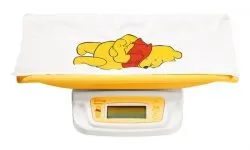
BABY SCALES: Definition, Price and Types

RICE LAKE SCALE: Prices, Reviews and Offers
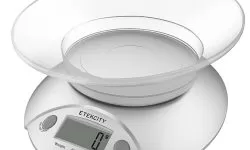
FOOD DIGITAL SCALES: Prices

GRAMS SCALE: What Is It For ? Models and Brands

TANITA SCALE: Prices and Offers

How to make a WOODEN BALANCE or HOME BALANCE ?
Household Goods in ALPHAPEDIA

RAID FLY SPRAY PRICE

NUMAXES SCALE: Prices and Offers

HAND FLY SWATTER PRICE

BABY SCALES: Definition, Price and Types

HOW TO MAKE A WOODEN PLANTER ?

💚 WALL LAMPS: Rustic, Modern, Indoor and Outdoor
Business and Industry Products in ALPHAPEDIA

💚 TRUCK SCALE: Definition, Price and Types

💚 WALL LAMPS: Great Price on Qualified Products

HEATING PAD: Brands, Types and Prices

💚 WALL LAMPS INDOOR: Great Price on Qualified Products
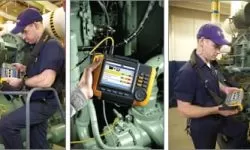
💚 VIBRATION SPECTRUM ANALYSIS
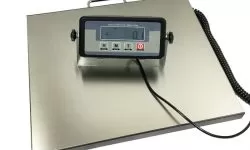
PLATFORM SCALE: Brands, Types and Prices
Other Products of Interest in ALPHAPEDIA

PRICE OF FLY SPRAY REPPELENT FOR THE YARD

LABORATORY TEST TUBE: Definition, Use and Price

SCALPEL PRICE: Reviews and Offers

💚 WALL LAMPS: Rustic, Modern, Indoor and Outdoor
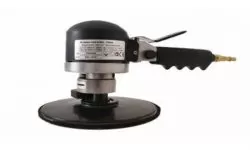
ORBITAL SANDER: Great Price on Qualified Products

INDUSTRIAL SCALPEL
